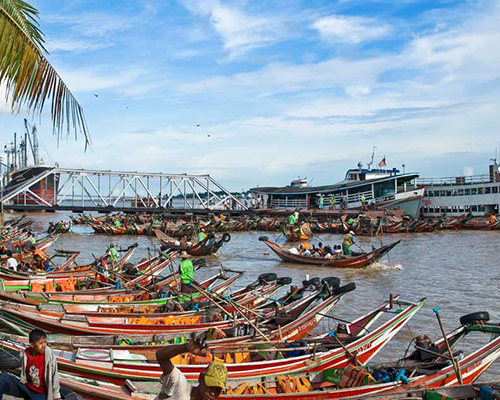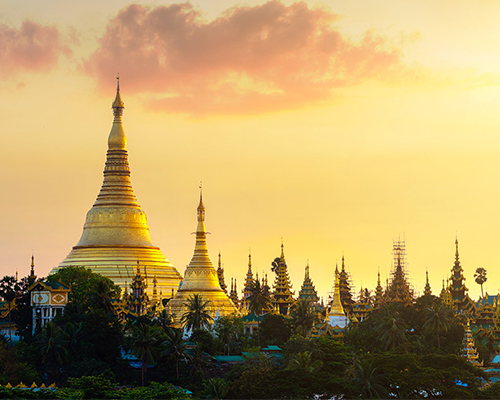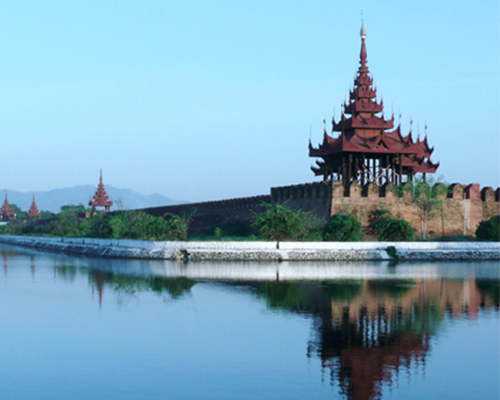Mrauk U and It's Environs
Mrauk U – The lost of city
Mrauki U, the ancient capital of Rakhine Kingdom is located 80 km north of Sittwe. A pleasant boat trip on the Kalatan River from Sittwe to Mrauk U takes about 5 hours. Some 8 km from Mrauk U is Wethali, another ancient capital of Rakhine during the 8th –10th centuries AD. Can have a very rare opportunity to witness elderly Chin women with their faces tattooed and wearing peculiar clothing, ears are bored wide with silver earrings, living in remote villages about 5 miles rugged road drive from Mrauk U. Once the capital of the powerful Rakhine kingdom and an important free trade port in the 16th century, Mrauk-U is now an archaeological site with several interesting temples and buildings. The most important temple is the massive Shittaung (the shrine of 80.000 images) built in 1535 by King Minbin and its interior walls are engraved with over 1.000 Buddhist figures. Additional interesting sightseeing points are the ruins of the royal palace and the remains of the city walls.
There was a history largely unknown to the Western world for much of its turbulent history, Arakan played a pivotal role in the exchange of cultures and religions between India and Southeast Asia. For over a thousand years the region which now forms the Rakhine State of the Union of Myanmar (Burma) was an independent state whose rich history is only slowly being paid the attention it deserves. Stretching along the Bay of Bengal, from the Naaf River which separates it from Bangladesh to Cape Negrais in southern Burma, it occupies the narrow strip of land to the west of the mountains of the ArakanYoma (Range). Land and sea routes connected it with Bengal to the west and Burma proper to the east, routes that were traveled by peoples, religions and cultures. When its neighbors were weak, Arakan was able to expand its influence along the coast to the east, west and south. At other times strong and aggressive neighbouring states would drive the Arakanese back to their homeland in the north or, at times, seek to conquer them.
Sittwe

Sittwe (known as Akyab), with 2000 year history of in habitat, sits at the mouth of the Kaladan River where it empties into the Bay of Bengal. It can be accessible by air, approximately 50 min flight, from Yangon. Sittwe is the gateway to the archaeological site of Mrauk U with the historical temples of the 15th and 16th centuries. Sittwe boasts several interesting pagodas and magnificent collection of Buddha images, some dating back to the 15th century.
Sittwe’s central market is recognizable by its uniquely styled (and out of use) iron clock tower. The fish market can be found directly to its east; it is enjoyable to simply walk through and soak up the atmosphere, and arriving at the seafront you are faced with the pleasant contrast of a quiet jetty with views out to the mouth of the Kaladan river.
View Point and Sittwe Beach
 One of the most popular places in Sittwe is called, simply, View Point (sometimes abbreviated to Point). Located a few kilometres south of town, where the sea meets the Kaladan River, it features a small park (complete with beer station) and an old watchtower with panoramic 360 degree views.
One of the most popular places in Sittwe is called, simply, View Point (sometimes abbreviated to Point). Located a few kilometres south of town, where the sea meets the Kaladan River, it features a small park (complete with beer station) and an old watchtower with panoramic 360 degree views.




